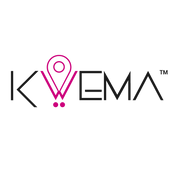In previous blogs, we have talked about how to prevent some of the most common injuries at work. For instance, strains and sprains to the muscles caused by overexertion, bone fractures caused by slip and falls, among others. But there is one more element that is in the list of common leading causes of workplace injuries: workers who get injured by contact with objects and equipment.
In this blog, we are going to provide you a general overview on these types of injuries and provide you some useful strategies to keep your employees safe.
Some examples of getting injured with objects and equipment include being stuck with a falling, flying or rolling object, when a part of the body is caught in an object or equipment or when a worker is caught or crushed in collapsing material.
According to most recent data of the BLS, contact with objects and equipment is the third leading cause of non-fatal injuries at work; and it is the fourth leading cause of workplace fatalities. In 2018, there were 235,740 incidents and 786 deaths of this kind recorded in the US. The most affected industries in experiencing this kind of incidents are service providers (more than 158,000 injured workers); trade transportation (more than 79,000) and manufacturing (more than 44,000).
On the other hand, The Workplace Safety Index by Liberty Mutual ranks stuck by object or equipment as the third most disabling workplace injury cause. US employers covered $5.22 billion in worker compensation costs.
Avoid common injuries at your workplace
Although injuries caused by contact with objects and equipment are very common at the workplace, it is possible to minimize the risk of experiencing these incidents. Take a look at these following recommendations to keep your employees safe:
Make sure that employees are using proper PPE
-
Hard hats are useful for protecting the head from falling and flying objects, a collision impact, debris and many other hazards.
-
The use of protective clothing such as red and orange vests and other reflective materials makes employees highly visible, particularly if they work in high risk areas where heavy machines are operated or if they work at night.
Conduct inspection in work areas and tools
-
Make sure that PPE, tools and vehicles are in good working conditions before workers use them.
-
Keep in mind that safety inspections are helpful to identify other potential hazards. For example, when there are piles of storage materials that can collapse in the working area or when it comes to verify that lifting loads are adequate for machines to prevent slipping materials.
Educate your employees on safety practices
-
Train your employees to follow safety procedures such as clearing the work zone when there is a machine in movement or heavy lifting is performed.
-
Remember that employees must be properly trained to use PPE, tools or heavy equipment.
-
Employees must be able to identify potential hazards in their work area.
In addition to providing safety training, conducting workplace hazard and identification assessments and providing adequate PPE, we believe that every workplace must have safety tools that add value and support safety operations as well as professionals in the field to maintain employees safe from hazards like being hit or caught by an object or equipment.
Kwema builds safer workplaces by providing safety wearables to employees who are exposed to potential risks and hazards at their job every day. Our safety devices can quickly activate an emergency protocol, alerting safety supervisors and 911 when they are in danger and maximizing response time and containing any escalation. Moreover, our technology is designed to make adoption easy and avoid training costs.
Watch how Kwema is disrupting workplace safety.
Photo by Kateryna Babaieva on Pexels

Hazardous area training is of paramount importance in various industries where employees are exposed to potentially dangerous and explosive atmospheres.
https://www.voltedge.com.au/course-types/hazardous-areas/